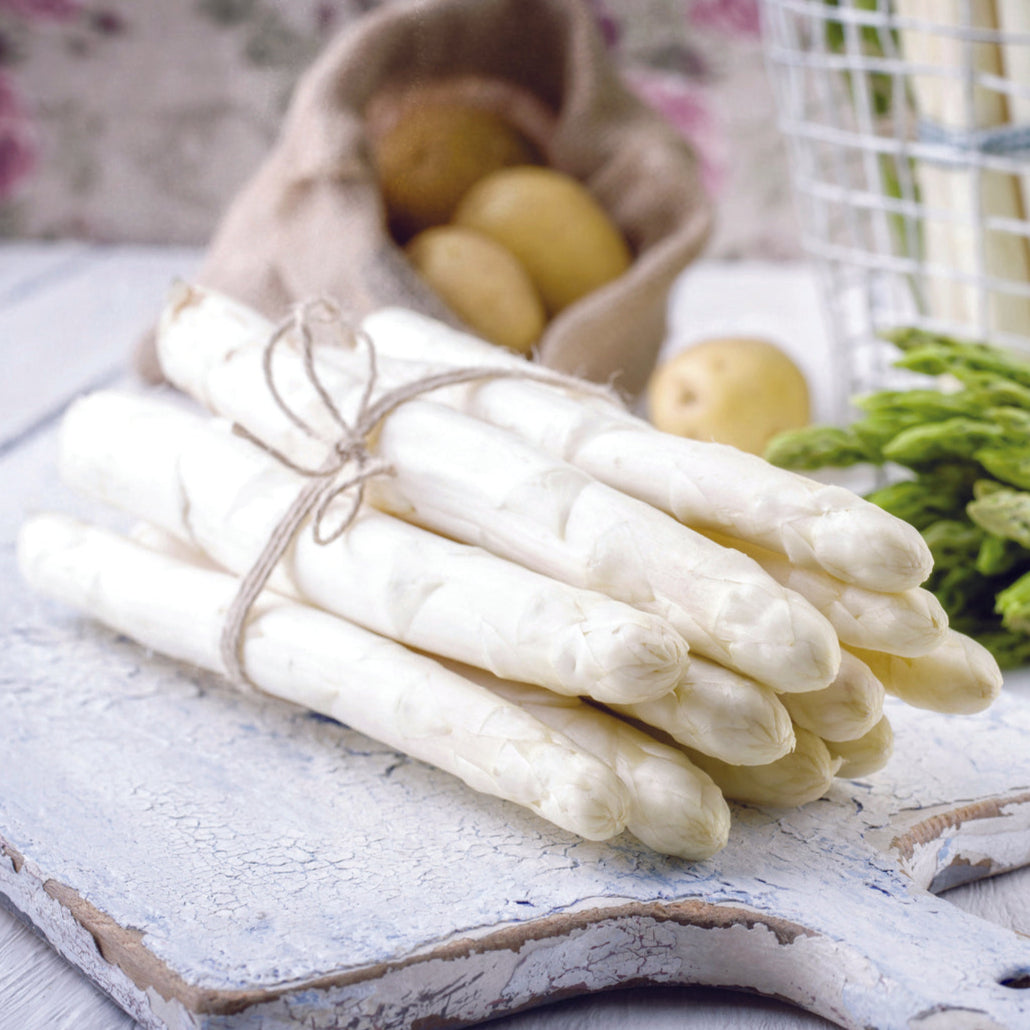WHITE ASPARAGUS LOLITA (Angela) - 10 CLAWS - 2 years old
Adparagus officinalis
Lolita asparagus is a white, early-ripening, highly productive variety of uniform size. Lolita asparagus is very tasty.
Asparagus will begin to produce in the 3rd year, one year after planting the 2-year-old crowns.
Conservation of claws before planting
If the soil is too frozen or too wet and it is necessary to postpone planting, it is possible to keep the claws in a container in very slightly damp sand (it must absolutely not be soggy) in a room away from light at 5-10 °C. Be careful not to dry out the claws. As soon as the weather conditions are right and depending on the region, it is best to plant them as soon as possible upon receipt.
Planting asparagus
Asparagus particularly thrives in sandy soil, which warms up quickly. It is possible to plant asparagus in more traditional soil, but avoid planting it in cold, damp soil.
Plant the claws from February to April in properly prepared soil in a sunny (or partially shaded) location to ensure the longevity of the crop. Ideally, you should have prepared your soil in the fall.
1. Dig trenches about 25-30 cm deep and 30 cm wide. Leave the soil between the trenches. These trenches will be spaced about 1.80 to 2.00 meters apart. Then, loosen (without turning over) the bottom of the trench and incorporate compost and base fertilizer.
2. When planting the claws, make small mounds of earth about 8 cm high and space them 70/80 cm apart. Don't forget to add a stake to help mark the location but also support growth during the first few years. On each of these small mounds, place a claw, spreading the roots well. Cover with soil to a depth of about 6 cm.
During this first year, the plant will slowly settle in.
Asparagus cultivation
From the second year onwards, the ground will need to be levelled. Each year after that, a mound must be built during the month of March along the entire length of the trench, to a height of 50 cm.
Starting in October, cut off any dry or yellowed stems above the ground and level the ground. The stems do not necessarily need to be cut if they are not dry.
Annual fertilization will be welcome, although asparagus is not considered an impoverishing plant.
"One hoeing is worth two waterings": an old adage that also applies to asparagus
Asparagus harvest
From the third year in May-June (and it is important not to harvest before, at the risk of compromising the proper development of the plant thereafter), it is possible to harvest 1 or 2 shoots.
It is only from the fourth year that a normal harvest is possible in May-June and this continues for many years.
The shoots are harvested using a gouge to gently dig them deep into the soil.
Enemies
The main pests of asparagus are flies (seed flies, asparagus flies and leaf miners) and leaf beetles.
Only leaf beetles may require intervention when their numbers produce a real defoliating effect in late spring and/or summer. In this case, the plants should be monitored after they have produced shoots, i.e., when the canes are forming, and only treated when the larvae are young. Aphid attacks are rarer, but in the south of France, intervention is sometimes necessary at the end of the season.
After planting, the diseases observed on canes and leaves (cladodes) are mainly rust, which is particularly harmful to young plants, and stemphylliosis, which causes asparagus to die back due to the drying out of the aerial parts. It is therefore necessary to treat preventively in sensitive regions (south), during stormy periods.
If treatment is necessary, only products marked "authorized for use in gardens" should be used.











